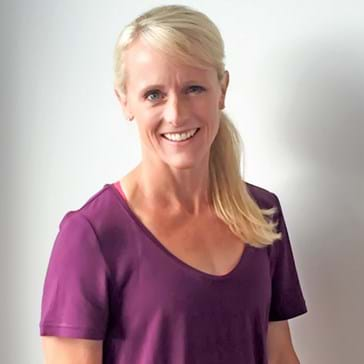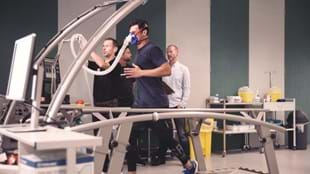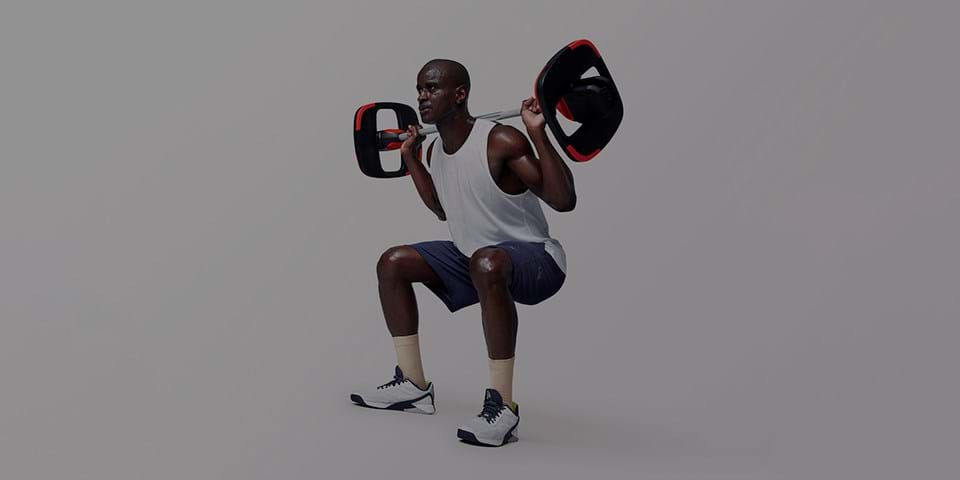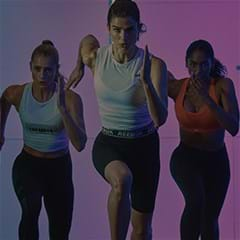The fitness industry is amazing, full of positive energy and positive people taking action to become better versions of themselves – and helping others do the same. But unfortunately, there’s one aspect that's letting our industry down: the world of exercise is awash with fitness falsehoods and misleading information.
Overhyped exercises, ridiculous hacks, uncredible studies, the list goes on … And it has done for decades. Let’s take core training for example. In the 1950s, there were claims that crunches would melt away tummy fat, in the 1980s there were waist trainers to trim your midriff, and more recently there’s been shock therapy to target your abdominals. All completely ineffective. And all leaving ill-informed enthusiasts disillusioned, demotivated – and without the core transformation they were promised.
The world of exercise is awash with fitness falsehoods and misleading information ... The last thing we need is to have people giving up on exercise because they feel like fitness has failed them.
With a global imperative to reduce physical inactivity by 15 percent by the year 2030, the last thing we need is to have people giving up on exercise because they feel like fitness has failed them.
Instead, we need to help people learn how to spot fake facts and skewed recommendations a mile off. We spoke to fitness academic Dr. Jinger Gottschall to learn her top tips for identifying the right experts, deciphering academia, and making fitness choices based on your needs – not the latest fad.
Firstly, many claim to be experts, what actually makes an expert?
Dr. Jinger Gottschall: “An expert is someone with extensive education, experience, and knowledge in a particular field, usually with a narrow focus. If you’re looking for an expert, check for graduate degrees and affiliations with academic institutions or government agencies.”
What are some of the tell-tale signs of overhyped bogus claims?
“Look for any phrases that indicate a quick fix with extreme results. Long-term changes in body composition such as fat or muscle mass take time and effort. So individuals who have experienced dramatic results in a short time are not typical and will likely not last more than a month. Also, be wary of before and after photos – these days it is incredibly easy to manipulate results!"
Research-backed claims are important. What are key things to look for if you want quality science-backed information?
“Social media posts from individuals are often not validated. Look for sources such as academic institutions, scholarly journals, government organizations, or federal associations. Evaluate the author, sources, and publication for authority. Does the author have experience in the topic? Are they citing true experts in the field? Is the publication from a respectable source? Rely on sources that cite peer-reviewed journal articles. And check the date! Sources older than a few years could no longer be relevant.”
Not all research is created equally. Can you explain the difference between independent research and non-independent research?
“There are a few definitions regarding independent and non-independent research. Typically, if a company independently funds its own studies, it is non-independent and is treated as marketing information. In contrast, independent research is from an external source and includes the required research protocols.”
“At Les Mills, we undertake a variety of different approaches to inform and back up our fitness programming. Over the years many independent academics have published studies on the various LES MILLS programs. These have had no involvement from the Les Mills research team. In some cases subject matter experts from within Les Mills work alongside external researchers on projects that go on to be peer-reviewed and independently published in academic journals. The Les Mills research team also undertakes a lot of non-independent internal research and testing which is used to help shape the exercises that feature in specific workouts.”
Bryce Hastings, Les Mills Head of Research.
There’s a lot of confusing research jargon out there, what does it all mean?
“A systematic review is when researchers simply gather all the research defined by specific terms or topics with a report of their findings. A meta-analysis takes this a step further by adding statistical procedures to analyze the combined results – so it provides a more thorough conclusion.
A clinical trial is a research study in which human participants are assigned to a specific regime to evaluate its effects. If it is a randomized control study, the participants are assigned randomly and there is a second regime for comparison. If a clinical trial includes evaluating variables over an extended period, it is longitudinal.
Peer-reviewed is the process of getting research published in a reputable journal. The editors send the document to two to three experts in the field for evaluation of quality. These experts make sure all the appropriate methods, statistics, and conclusions are included in the manuscript.”
So, what type of research and experts should you trust the most?
“Personally, I always try what the experts publish in peer-reviewed journals. If a particular training method or exercise prescription has been tested in a controlled experiment, then the chances are greater that you will achieve the desired results. If not, try alternative methods. But do your research to make sure it is safe and approved by governing bodies ACSM (the American College of Sports Medicine) or AHA (American Heart Association).”
What’s your final piece of advice?
“Just stay aware that it’s very easy to make claims, but hard to back them up. One of the historic examples is the vibrating belt to reduce abdominal fat. There has also been cellulite reducing compression pants – don’t get me started on those!”
3 WAYS TO STAY STREET SMART WHEN IT COMES TO FITNESS CLAIMS
- Follow the advice of true experts (not influencers)
- Wise up to ‘quick fixes’ and ‘rapid transformations’. Most long-term changes in body composition take time and effort
- Follow recommendations backed by science – ideally based on research published in peer-reviewed journals.
Keen to learn a little more about three fitness claims backed by science?
Core exercises can make you run faster

A 2019 study published in the Journal of Sports Medicine and Physical Fitness showed that LES MILLS CORE workouts can improve running performance and be beneficial for improving joint symmetry for injury reduction, deep hip muscle training for knee alignment, and abdominal training for efficient force transmission. Read more here.
Two weeks of yoga can improve sleep and ease anxiety

A 2020 study published in the Journal of Medicine and Science in Sports and Exercise provides evidence that the calming effect of BODYBALANCE/BODYFLOW sessions result in valuable physical and mental health benefits. Read more here.
Not all calories are burned equally

A 2017 study published in the Journal of Science and Medicine in Sport showed that resistance training – in the form of BODYPUMP – triggers far greater fat-burning and other healthy responses in the body than its calorie count reflects. Read more here.

Dr. Jinger Gottschall
A passionate advocate for physical activity, Dr. Gottschall has dedicated her career to finding programs that promote balanced, healthy lifestyle choices, while delivering the results they promise. This has involved leading numerous studies exploring exercise efficacy and founding the FITOLOGY group fitness studio. She earned her doctorate degree in integrative physiology from the University of Colorado at Boulder, then furthered her academic career as a postdoctoral fellow in neurophysiology at the Emory School of Medicine, and as an Associate Professor in Kinesiology at The Pennsylvania State University. Dr. Gottschall is currently an Adjunct Associate Professor in the Department of Biobehavioral Science at Columbia University.








